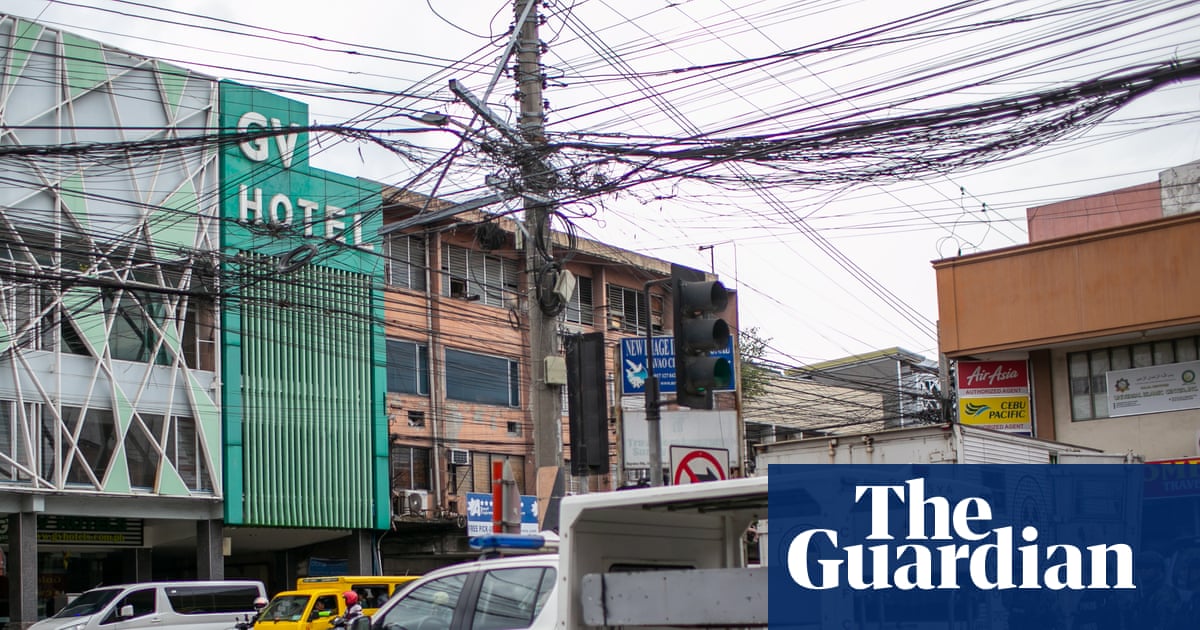Last Updated:November 24, 2025, 13:09 IST
From TikTok badges to endless feeds, doomscrolling is rising quietly, eroding sleep, escalating anxiety and revealing how addictive digital rewards are shaping late-night habits.

Late-Night Doomscrolling Surges! How TikTok Badges Are Driving A New Wave Of Endless Night-Time Scrolling? (Image-AI)
The era of doomscrolling – endlessly consuming distressing news and negative content is taking a soft turn. A new trend, also referred to as ‘Bloomscrolling,’ is emerging, encouraging users to deliberately scroll through uplifting, educational, or creatively enriching content instead of spiralling into anxiety.
As conversations around digital wellbeing grow louder, digital platforms like TikTok are beginning to recognise the long-term impact of doomscrolling on mental health. The company has rolled out new tools and behavioural nudges aimed at slowing endless scrolling, moderating late-night screen habits, and promoting healthier, more mindful consumption.
A Shift Toward Bloomscrolling
As doomscrolling’s toll becomes recognised more widely, this counter-trend is gaining momentum. Digital wellness specialists note that repeated exposure to positive stimuli triggers dopamine release linked to curiosity and motivation. This encourages healthier browsing patterns and counters the stress response activated by negative news.
Many argue that algorithmic systems respond to user behaviour; when individuals consistently engage with positive content, digital environments slowly shift in that direction. Over time, this creates feeds that promote resilience rather than anxiety.
Doomscrolling: The Habit Reshaping Urban Nightlife and Mental Health
Late-night screens glow across modern Indian cities, with faces illuminated by screens, feeding a steady stream of algorithms loaded with topics like conflicts, anxiety, and communal outrage. This behaviour has a name – doomscrolling. The term that surged into public consciousness during the Covid-19 pandemic has become a cultural shorthand for an era defined by digital exhaustion.
What began as an instinct to stay informed has transformed for many into a ritual. A 2024 Harvard Health Publishing study noted that doomscrolling, once tied primarily to pandemic anxiety, has evolved into an “insidious threat" to mental and physical health amid continuing global unrest. The phenomenon now shapes daily routines, sleep patterns, and even the brain’s reward pathways.
TikTok – the ecosystem that popularised the infinite scroll for a new generation- is now introducing digital well-being tools aimed at encouraging healthier habits. Teen users can expect affirmation journals, calming soundscapes, breathing modules, sleep-hour prompts, and, most intriguingly, badges awarded for limiting app usage are among the features being rolled out.
The ‘time and well-being features’ underscore the app’s commitment to fostering a balanced online experience. With more than 120 affirmation cards or positive prompts, the redesigned screen-time management page includes a sound generator offering a calming audio guided by breathing exercises.
Notably, TikTok is introducing badges — digital rewards granted to users who adhere to screen-time limits, avoid the app during designated sleep hours, or complete meditation exercises. To frame restrictions as achievements rather than prohibitions, the app is turning healthy habits into what it calls “well-being missions."
But beneath these interventions lies a larger question: why has doomscrolling become so addictive, particularly for today’s youth?

The Psychology Of Doomscrolling
According to the Cleveland Clinic, doomscrolling is the behaviour of consuming large amounts of negative news, often in an attempt to manage anxiety or gain a sense of control. The clinic also notes that while many individuals justify this behaviour as an effort to stay informed and updated, there is “something deeper at play," involving the brain’s tendency to confirm negative feelings by seeking information that reinforces them.
The addictive pull of doomscrolling is rooted deeply in neuroscience. Harvard Health Publishing’s September 2024 feature on doomscrolling emphasised that the behaviour is tied to the brain’s limbic system — particularly the amygdala, which manages fight-or-flight responses. “With constant global tension, the amygdala becomes hyper-vigilant, driving individuals to scan for threats in a digital environment where crises appear in near-real time."
Dr Aditi Nerurkar of Harvard Medical School described doomscrolling as a modern response to chronic, unrelenting stress. The brain, designed to handle brief bursts of threat, is now confronted with an unending stream of alarming content. The result is a persistent state of hyper-arousal that fuels further scrolling.
Harvard highlights two particularly vulnerable groups: women and individuals with trauma histories. Dr Richard Mollica, director of the Harvard Program in Refugee Trauma, explained that women are disproportionately affected because much of the violent media involves harm to women or children.
Meanwhile, trauma survivors may doomscroll as a coping mechanism to monitor potential danger, though the behaviour frequently acts as a trigger instead.
How Does Doomscrolling Rewire The Brain?
Beyond emotional consequences, doomscrolling has physiological and neurological effects. Harvard researchers highlighted consequences such as elevated blood pressure, headaches, sleep disturbances, reduced appetite, muscle tension, and heightened existential anxiety.
A review published in Applied Research in Quality of Life in April 2023, analysing three studies involving more than 1,200 adults, linked doomscrolling to decreased life satisfaction and poorer mental well-being. Meanwhile, a 2024 study in Computers in Human Behaviour Reports involving 800 adults found that doomscrolling triggers higher levels of existential anxiety — a sense of dread related to the limits and inevitabilities of human existence.
A separate April 2024 report in Computers in Human Behaviour showed that employees who doomscroll during work hours demonstrate reduced professional engagement.
Dr Nerukar says, “Doomscrolling can give us ‘popcorn brain,’ which happens when we spend too much time online. “It’s the real, biological phenomenon of feeling your brain is popping because you’re being overstimulated online," she explains. “Then it’s hard to engage with the real world, which moves at a much slower pace."

Young People And The Digital Pull
Studies consistently highlight that younger generations are particularly vulnerable to doomscrolling due to a combination of developmental, social and digital environmental factors. A study in Personality and Individual Differences revealed that individuals with higher anxiety levels are more prone to uncertainty intolerance, which increases the urge to consume negative information.
For Gen Z, several dynamics include:
Infinite scroll is a native experience- This generation grew up with platforms designed around endless feeds – Instagram reels and more.Social media is a source of news- Rather than turning to traditional media outlets, younger users encounter news with memes, commentary and influencer narratives.Global crisis shaping worldview- Climate change, wars, political unrest, and economic instability dominate online spaces aimed at younger audiences.The Digital Consequences
“Doomscrolling disrupts the sleeping patterns, particularly when negative news is consumed before bed," according to the Cleveland Clinic. In one study, 70% of participants acknowledged checking social media while in bed, with increased difficulty falling asleep among those who spent more time doing so. Doomscrolling can also contribute to “crazymaking," a term used to describe the disorientation caused by conflicting information from different media sources.

Will TikTok’s Badges Make A Difference?
TikTok’s new well-being feature indicates that doomscrolling is not just a bad habit but a widespread behavioural concern which should be addressed. By introducing badges and missions rather than imposing strict limits, the platform aims to shift the psychology of digital self-control. By rewarding users for healthier choices, the step is believed to help normalise balanced digital habits.
Doomscrolling emerged from a moment of global crisis, but its grip has lingered beyond the pandemic. TikTok’s new well-being features – badges, breathing tools, affirmations journals and sound generators signal an important shift. Between doom and bloom, the generation is trying to renegotiate its relationship with the endless scroll — one badge, one boundary, and one conscious swipe at a time.
First Published:
November 24, 2025, 12:41 IST
News world The TikTok Badge Effect: Why Doomscrolling Is Spiking And Sleep Is Becoming Harder To Hold On To
Disclaimer: Comments reflect users’ views, not News18’s. Please keep discussions respectful and constructive. Abusive, defamatory, or illegal comments will be removed. News18 may disable any comment at its discretion. By posting, you agree to our Terms of Use and Privacy Policy.
Stay Ahead, Read Faster
Scan the QR code to download the News18 app and enjoy a seamless news experience anytime, anywhere.


 3 weeks ago
3 weeks ago














